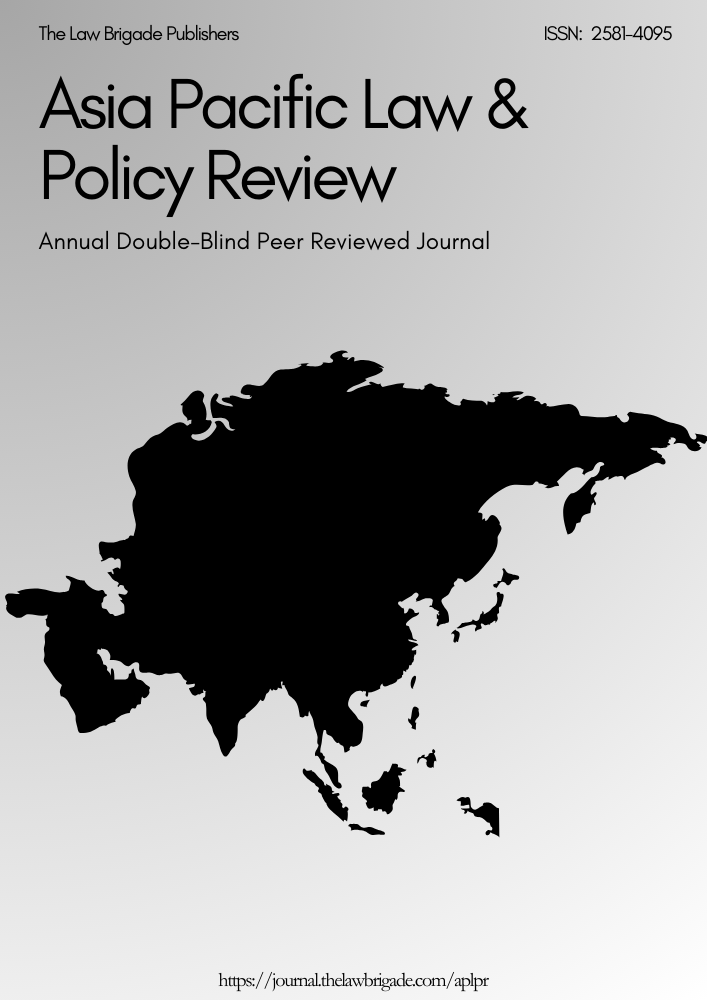ME TOO MOVEMENT
Keywords:
Sexual Harassment, Policy makingAbstract
The ME Too movement (or "#Me Too", with native alternatives in alternative languages) could be a movement against molestation and assault ’’ME Too ‘’unfold virally in October 2017 as a hashtag used on social media to assist demonstrate the widespread prevalence of regulatory offence and harassment, particularly within the geographical point. It followed before long when the general public revelations of sexual misconduct allegations against medico Weinstein. The phrase was popularized by Alyssa urban center once she inspired girls to tweet regarding it and "give individuals a way of the magnitude of the problem".
Downloads
References
http://www.indiatogether.org/manushi/issue137/laws.htm
http://safecity.in/sexual-violence-laws-under-the-indian-penal-code
https://en.wikipedia.org/wiki/Child_sexual_abuse_laws_in_Indi
Paula McDonald and Sara Charlesworth (2016) Workplace sexual harassment at the
margins, Work, employment and society, 30(I), pp. 118-134, Available at:
http://journals.sagepub.com/doi/pdf/10.1177/0950017014564615 (Accessed: 1st April
2018).
Meera Senthilingam (29th Nov 2017) Sexual harassment: How it stands around the globe,
Available at: https://amp.cnn.com/cnn/2017/11/25/health/sexual-harassment-violenceabuse-global-levels/index.html (Accessed: 7th April 2018).
Gareth Hutchens (8th Nov 2017) Rate of sexual violence against women has risen
dramatically since 2012, ABS says, Available at: https://amp.theguardian.com/australianews/2017/nov/08/rate-of-sexual-violence-against-women-has-risen-dramatically-since2012-abs-says (Accessed: 9th April 2018).
World Health Organization (2013) Global and regional estimates of violence against
women: prevalence and health effects of intimate partner violence and non-partner sexual
violence, Italy, Available at:
http://apps.who.int/iris/bitstream/handle/10665/85239/9789241564625_eng.pdf;jsessioni
d=241A510FAAF9C807BFF016C33BE8BBBC?sequence=1 (Accessed: 8th April 2018)
World Health Organization (Nov 2017) Violence against women, Available at:
http://www.who.int/mediacentre/factsheets/fs239/en/ (Accessed: 8th April 2018).
Data.Gov (2017) National Sexual Violence Resource center, USA: U.S. Department of
Health & Human resources, Available at: https://catalog.data.gov/dataset/national-sexualviolence-resource-center-nsvrc, (Accessed: 8th April 2018).
Mark Easton (2014) The truth behind the rise in sex crimes, Available at:
http://www.bbc.com/news/uk-27147864 (Accessed: 7th April 2018).
David Jogn Frank, Tara Hardinge and Kassia Wosick-Correa (2009) 'The global
dimensions of rape-law reform: A cross-national study of policy outcomes', American
Sociological Review, 74(2), pp. 272 - 290, Available at:
http://journals.sagepub.com/doi/full/10.1177/000312240907400206, (Accessed: 2nd April
2018).
World Health Organization (2017) World Report on Violence and Health: Sexual
Violence, Available at:
http://www.who.int/violence_injury_prevention/violence/global_campaign/en/chap6.pdf,
(Accessed: 1st April 2018).
Kelly K. and Bonnar-Kidd (2010) 'Sexual offender laws and prevention of sexual violence
or recidivism', American Journal of Public Health, 100(3), pp. 412 - 419, Available at:
https://www.ncbi.nlm.nih.gov/pmc/articles/PMC2820068/, (Accessed: 30th March 2018)
Downloads
Published
Issue
Section
License

This work is licensed under a Creative Commons Attribution-NonCommercial-ShareAlike 4.0 International License.
License Terms
Ownership and Licensing:
Authors of research papers submitted to any journal published by The Law Brigade Publishers retain the copyright of their work while granting the journal specific rights. Authors maintain ownership of the copyright and grant the journal the right of first publication. Simultaneously, authors agree to license their research papers under the Creative Commons Attribution-ShareAlike 4.0 International (CC BY-SA 4.0) License.
License Permissions:
Under the CC BY-SA 4.0 License, others are permitted to share and adapt the work, even for commercial purposes, provided that appropriate attribution is given to the authors, and acknowledgment is made of the initial publication by The Law Brigade Publishers. This license encourages the broad dissemination and reuse of research papers while ensuring that the original work is properly credited.
Additional Distribution Arrangements:
Authors are free to enter into separate, non-exclusive contractual arrangements for distributing the published version of the work (e.g., posting it to institutional repositories or publishing it in books), provided that the original publication by The Law Brigade Publishers is acknowledged.
Online Posting:
Authors are encouraged to share their work online (e.g., in institutional repositories or on personal websites) both prior to submission and after publication. This practice can facilitate productive exchanges and increase the visibility and citation of the work.
Responsibility and Liability:
Authors are responsible for ensuring that their submitted research papers do not infringe on the copyright, privacy, or other rights of third parties. The Law Brigade Publishers disclaims any liability for any copyright infringement or violation of third-party rights within the submitted research papers.


